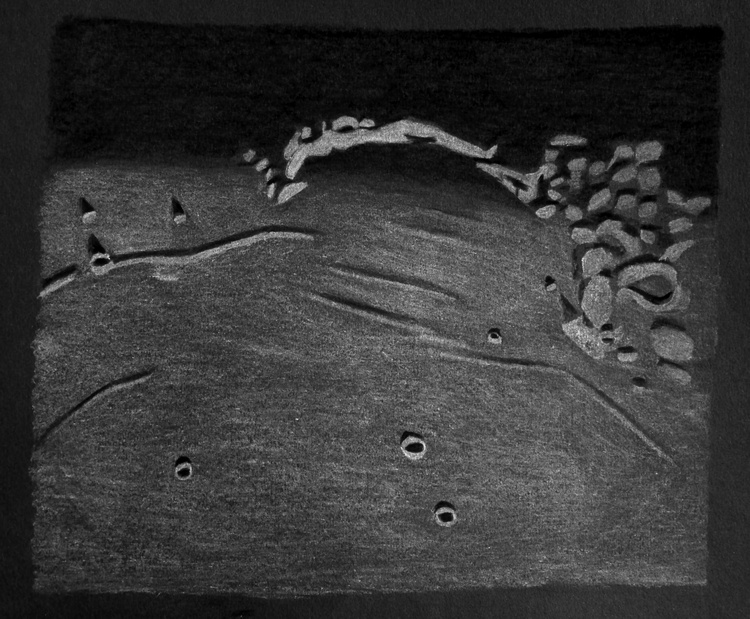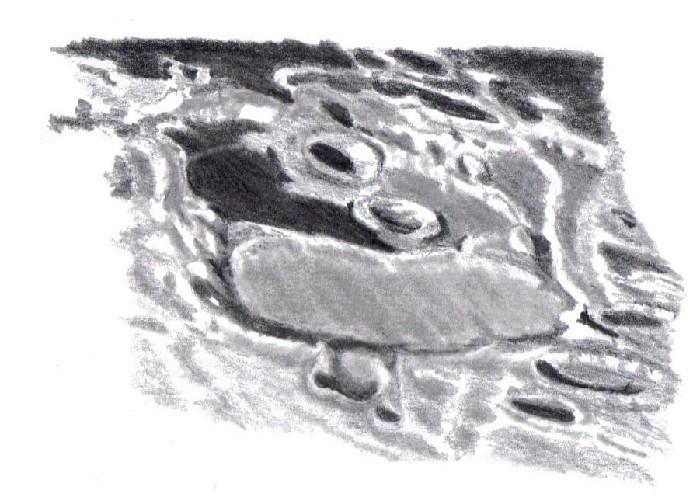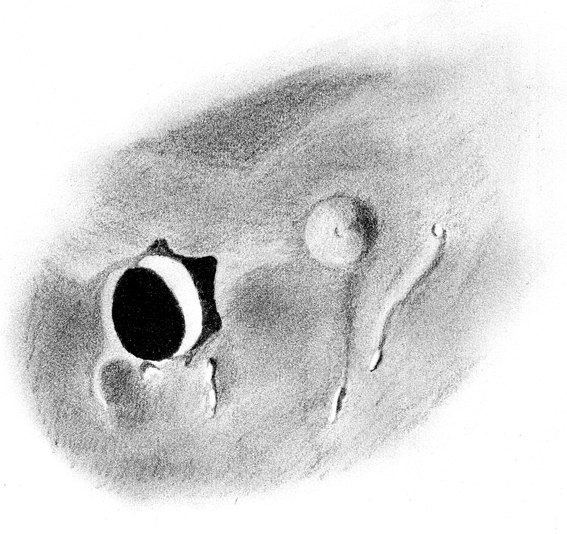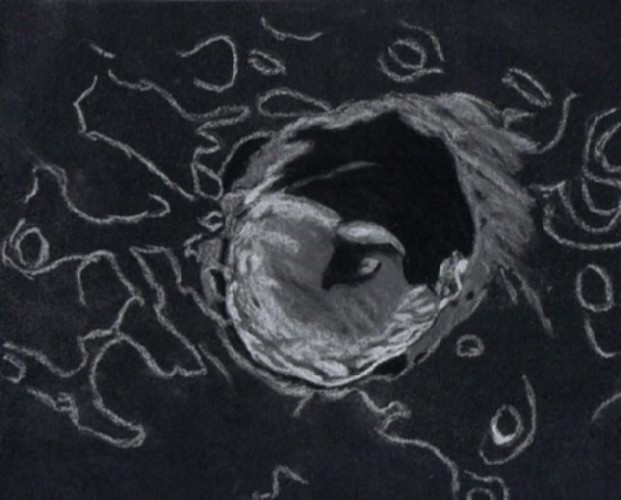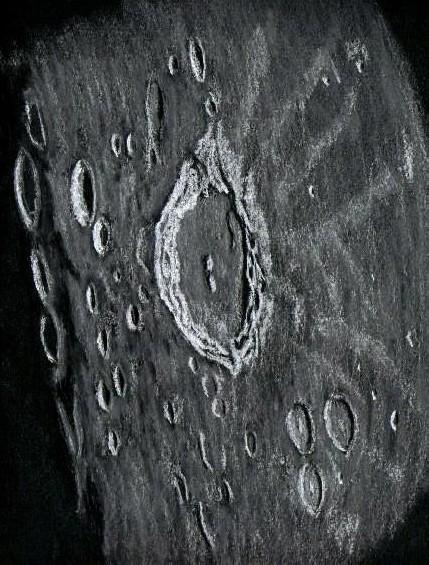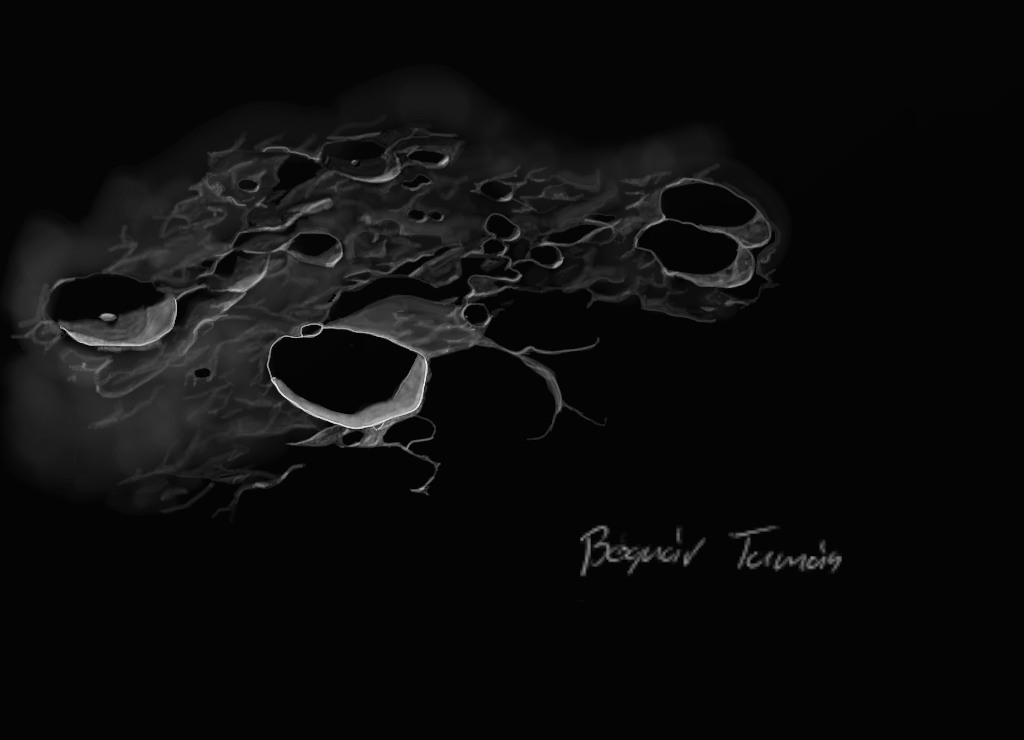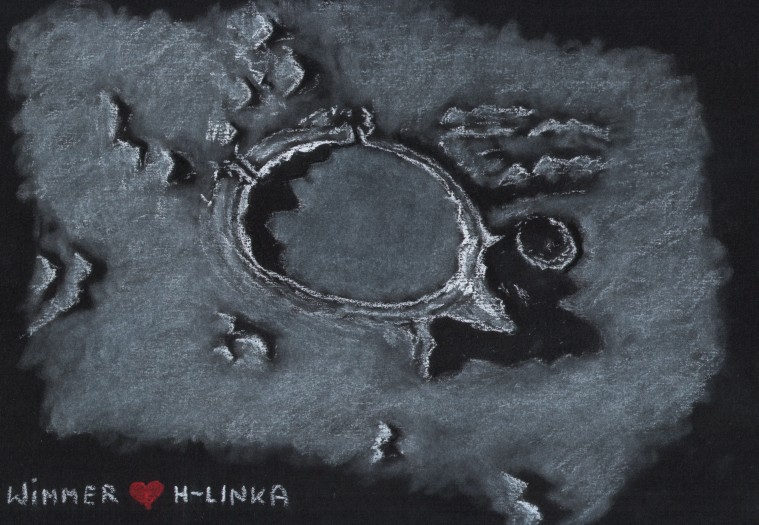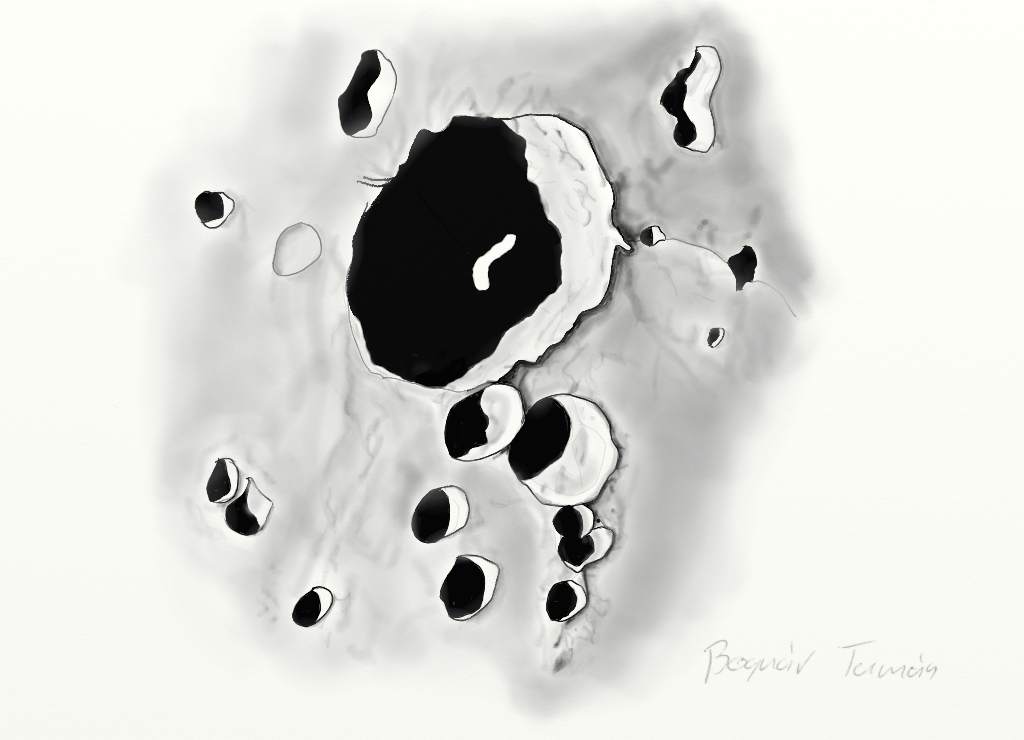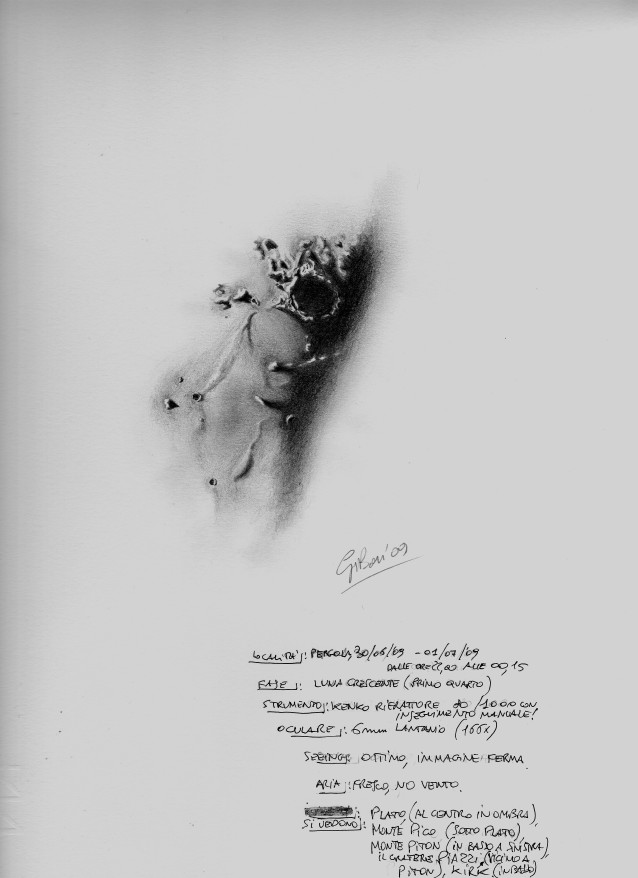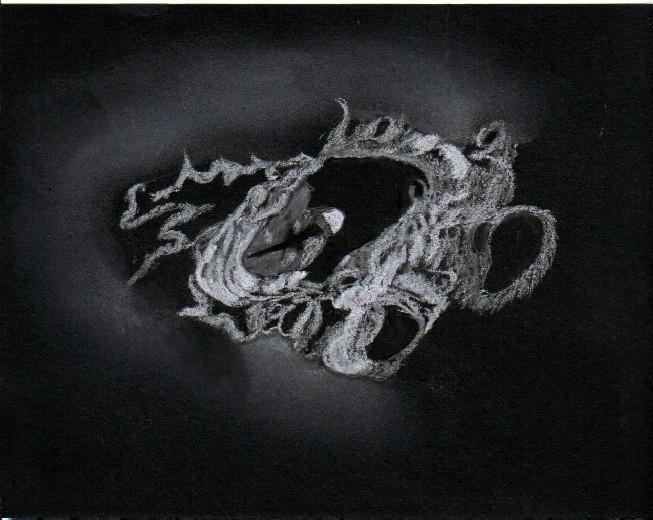
The Lunar Crater Moretus
Sketch and Details by Frank McCabe
Lunar Crater Moretus
When I think of craters in and around the south polar region of the moon, this is the one that comes to mind first. The lunar excavation I have sketched here is complex crater Moretus (114 kilometers in diameter). Moretus is an Eratostherian age feature with remarkable depth of nearly 4 kilometers from rim to floor. Rising above the center of that floor and casting a long shadow to the base of the east wall is the 2.6 km. central peak reflecting much light to my eye from its mostly shadowed surroundings. The inner terraced walls were gleaming on the eastern side in the setting sunlight and even the glacis of melted eject was eye catching against the surrounding shadowed cratered field of the southern highlands. You cannot look at the moon on a morning like this and not be moved by the beautiful view of the old cratered moon.
Sketching:
For this sketch I used: black Canson paper 12”x 10”, white and black Conte’ pastel pencils, blending stumps. After scanning, Brightness was decreased (-2) and contrast increased (+2) using Microsoft Office Picture Manager.
Telescope: 10 inch f/ 5.7 Dobsonian and 6 mm eyepiece 241x
Date: 7-14-2009, 9:30 – 10:15 UT
Temperature: 15° C (60° F)
clear, calm, low humidity
Seeing: Antoniadi III
Colongitude 177.7°
Lunation 21.8 days
Illumination 58.4 %
Frank McCabe
